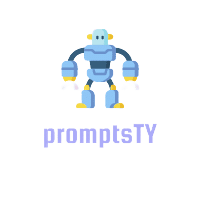Are you feeling overwhelmed by the prospect of data analysis? You’re not alone! Many of us struggle with where to start, especially when faced with mountains of data and endless possibilities for insights. It’s easy to feel lost in a sea of numbers and statistics, but it doesn’t have to be that way.
Stick around, and I promise you’ll discover how to simplify your data analysis journey using effective prompts tailored specifically for ChatGPT. These prompts can help you clean, prepare, and visualize your data, as well as perform descriptive and predictive analytics.
In this post, we’ll explore various prompts that will empower you to make sense of your data, boost your business intelligence skills, and ultimately, enhance your decision-making process. Let’s dive in!
Key Takeaways
- Use specific prompts to analyze datasets and uncover insights quickly.
- Before analysis, clean your data by detecting missing values, handling outliers, and removing duplicates.
- Generate visualizations with prompts for bar charts, pie charts, and line graphs to better understand trends.
- Utilize targeted prompts for descriptive statistics to simplify calculations like mean, median, and mode.
- Engage in predictive analytics with prompts that forecast sales and trends based on historical data.
- Enhance business intelligence by analyzing market trends and developing SWOT analysis through tailored prompts.
- Customize prompts to fit your specific data needs for more effective and relevant analysis.

Effective Prompts for Data Analysis Using ChatGPT
Data analysis can be significantly enhanced with the right prompts for ChatGPT.
Using tailored prompts helps to unveil insights from your datasets quickly and efficiently.
Here are a few effective data analysis prompts you might find useful:
- “Analyze the following dataset and identify key trends: [insert data].”
- “What conclusions can be drawn from this data: [insert data]?”
- “Summarize the main findings from this dataset: [insert data].”
These commands will help you maximize AI capabilities in data analysis and generate meaningful outputs.
How to Analyze Data with ChatGPT Prompts
To start analyzing data using ChatGPT, first, clarify your objectives.
Decide on the insights you want to achieve before crafting your prompts.
Here’s a step-by-step guide for effective analysis:
- Identify the dataset you want to analyze.
- Formulate specific questions about the data.
- Create prompts that address these questions; for example:
- “What is the average value in this dataset: [insert data]?”
- “Identify any outliers in this data: [insert data].”
- Input these prompts into ChatGPT and assess the generated responses.
This structured approach will facilitate a smoother data analysis experience.
Sample Prompts for Data Cleaning and Preparation
Before diving into analysis, it’s crucial to clean and prepare your data.
Here are some useful prompts for data cleaning and preparation:
- “Detect and list any missing values in this dataset: [insert data].”
- “Suggest methods to handle outliers in the following data: [insert data].”
- “Format this dataset to remove duplicates: [insert data].”
Using these prompts will streamline the data cleaning process, ensuring your data is ready for analysis.
Prompts to Generate Data Visualizations
Visualization is key to understanding data better.
ChatGPT can assist you in generating visualizations with the right prompts.
Here are some useful commands to get you started:
- “Create a bar chart for the following data: [insert data].”
- “Generate a pie chart to show the distribution of this data: [insert data].”
- “Visualize the trends in this dataset with a line graph: [insert data].”
These prompts will help you create comprehensive visual summaries of your data insights.

Using Prompts for Descriptive Statistics
Descriptive statistics summarize and organize data, making it easier to understand core patterns and trends.
ChatGPT can help you perform these calculations effortlessly with targeted prompts.
Here are some useful commands you can employ:
- “Calculate the median of this dataset: [insert data].”
- “Provide the mode for this data: [insert data].”
- “List the range and standard deviation for the following dataset: [insert data].”
- “Summarize the descriptive statistics (mean, median, mode) for this set: [insert data].”
These prompts will take the hassle out of calculations, allowing you to focus on interpreting the results instead.
Prompts for Predictive Analytics Tasks
Predictive analytics involves using historical data to forecast future outcomes.
By using ChatGPT, you can craft prompts that engage the model to provide predictive insights effectively.
Consider these prompts to guide your predictive analysis:
- “Create a linear regression model with this dataset: [insert data].”
- “Forecast the next quarter’s sales based on the following historical data: [insert data].”
- “What potential future trends can be derived from this dataset: [insert data]?”
- “Develop a predictive model for customer churn using this data: [insert data].”
These examples will help you harness Artificial Intelligence for forward-thinking analytics.
Examples of Prompts for Business Intelligence
Business intelligence helps organizations make informed decisions through data insights.
ChatGPT can be a valuable tool for gathering competitive insights and market analysis.
Try these prompts for effective business intelligence inquiries:
- “Analyze market trends based on this dataset: [insert data].”
- “What insights can we derive to improve customer engagement from this data: [insert data]?”
- “Create a SWOT analysis from the following information: [insert data].”
- “Identify key performance indicators (KPIs) for this dataset: [insert data].”
These commands will assist you in streamlining your business processes and strategies.
How to Customize Prompts for Your Data Needs
Customizing prompts to fit your specific data requirements is crucial for maximizing ChatGPT’s efficiency.
Here’s how you can create tailored prompts:
- Assess the unique aspects of your dataset and what you want to achieve.
- Modify existing prompts to focus on specific variables or goals; for instance:
- “Perform sentiment analysis on the following customer reviews: [insert data].”
- “Compare the performance of the following two products based on sales data: [insert data].”
- Use detailed prompts to guide the AI’s focus, like:
- “Identify correlations between age and purchase frequency in this dataset: [insert data].”
- Test and refine your prompts based on the responses you get to ensure accuracy.
This approach will help personalize your analysis and yield data insights that are relevant to your objectives.

Tips for Getting Accurate Analysis Results
Getting accurate results from your data analysis with ChatGPT starts with crafting precise prompts.
Be as specific as possible; vague requests lead to unclear answers.
For instance, instead of asking, “What trends do you see?” try, “Identify trends in sales data for Q1 2023: [insert data].”
Always include context or background information to help the AI understand your dataset better.
Here’s a list of prompts to help you gain accuracy:
- “Provide a detailed summary and analysis of the following customer feedback data: [insert data].”
- “Evaluate the correlation between these two variables in the dataset: [insert data].”
- “Identify patterns in the sales data over the past year: [insert data].”
Test different prompts and observe which yields the most accurate responses.
Don’t hesitate to refine your prompts based on the AI’s feedback.
Common Mistakes to Avoid When Using Prompts
Avoiding common mistakes can enhance your experience with ChatGPT for data analysis.
One major pitfall is asking ambiguous questions, which confuse the AI.
Instead of using broad prompts like, “Tell me about the data,” be more specific.
For instance, say, “What is the variation in sales figures month by month for this data: [insert data]?”
Additionally, don’t overload your prompts with too much information at once.
Break complex inquiries into simpler, sequential prompts.
Here are some common mistakes to avoid:
- Using non-specific language in prompts.
- Overloading prompts with too many questions or aspects.
- Neglecting to provide necessary context or variables.
By recognizing these issues, you can foster more effective interactions with ChatGPT.
Conclusion: Maximizing Your Data Analysis with ChatGPT Prompts
In summary, maximizing your data analysis using ChatGPT hinges on effective prompt creation.
From data cleaning to predictive analytics, each prompt plays a critical role in outcome accuracy.
Always consider the specific insights you seek, and tailor your queries accordingly.
Remember to avoid common mistakes and test various approaches to find what works best.
Finally, continuously refine your prompts based on the responses for even better results.
With these strategies, you can harness the power of ChatGPT to achieve meaningful insights from your data.
FAQs
Effective prompts should be clear, concise, and specific. Focus on the type of analysis you need, whether it’s data cleaning, visualization, or predictive analytics, to get the best responses from ChatGPT.
You can customize prompts by including specific details about your dataset, the type of analysis required, and desired outcomes. Tailoring prompts to your context will yield more relevant and accurate responses.
Avoid vague or overly complex prompts, as they can lead to unclear answers. Also, refrain from providing insufficient context or not specifying your data type, which could hinder the effectiveness of the analysis.
To ensure accuracy, provide clear context, including dataset characteristics and analysis goals. Continuously refine your prompts based on the responses you receive to guide the model toward your desired outcomes.
